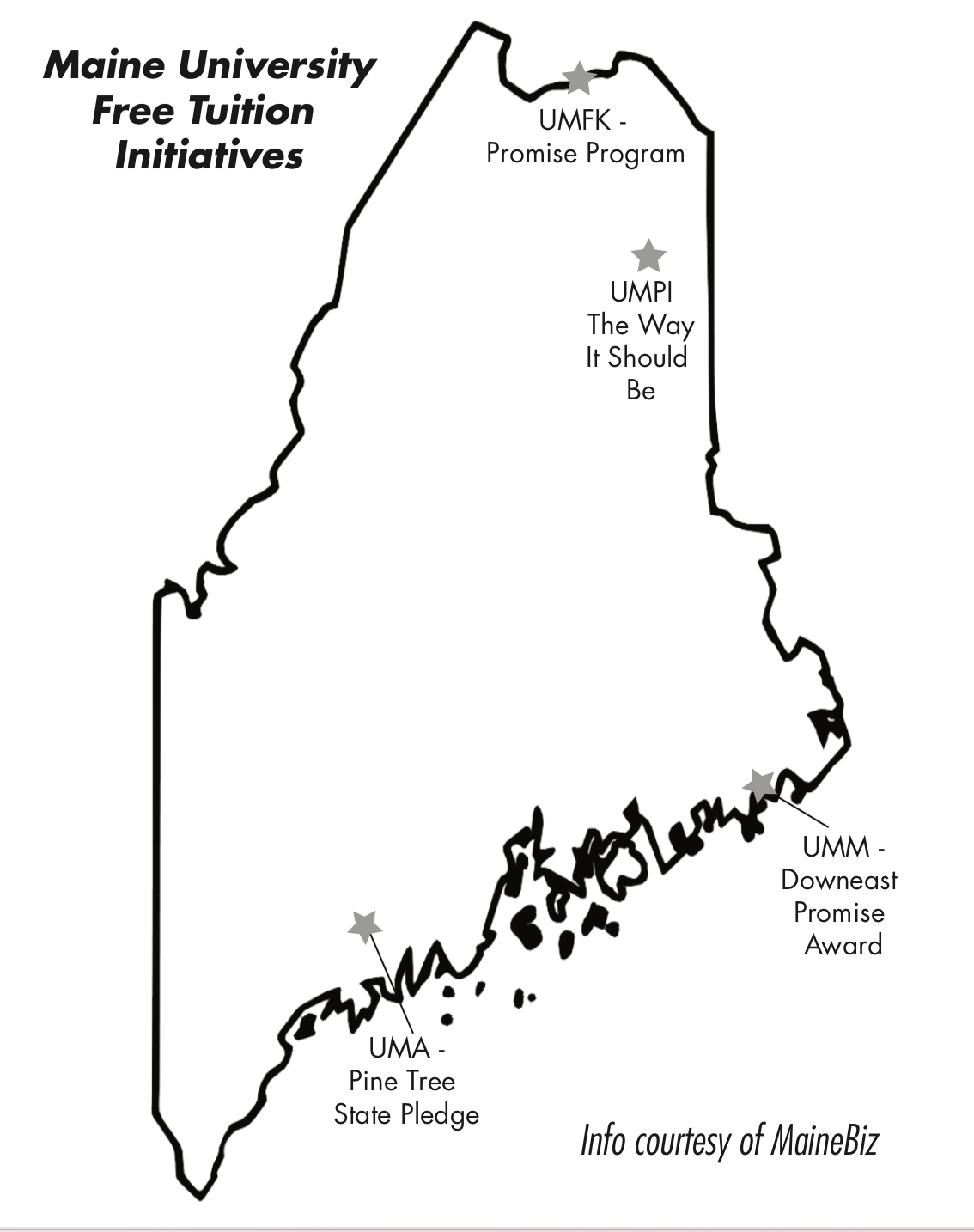By: Valerie Kazarian, Staff Writer
With the 2018 midterm election only two months away, the issue of free tuition is again being discussed. In Maine, organizations interested in Maine’s growth and development recognize that tuition relief is a desired goal but solutions seem to be elusive. The University of Maine System (UMS) has recognized the barrier to education among Maine’s neediest and they now offer a way to free tuition at several UMS campuses. This is the first of three articles that will explore the issue of when should free tuition be available, to whom and what the obstacles are to achieving its availability.
College students in Maine have serious financial disadvantages when compared to students both in New England in the United States in general according to Educate Maine. Maine students pay a higher proportion of their income for college than other students both in New England students and nationally, says the 2018 report. Further, they have the sixth highest debt on average than students in any other state, so what they borrow is a higher proportion of their income. The average Maine student who stays in state after graduation also earns less than graduates in other states, so their debt obligations are proportionally higher.
When addressing education policy and financing issues, the “College Affordability for Maine” 2016 report from Educate Maine and the Maine State Chamber of Commerce, indicates that the problem is rooted in the state budget. “In 1968, 18 percent of state general fund spending went to public higher education,” the report said, “by 2014, that percentage had declined in half, to nine percent.” To put it differently, the state share of higher education costs has decreased from seventy percent to under 50 percent while the responsibly borne by students and their families has risen from under 30 percent to over 50 percent. The Educate Maine report suggests that the portion of the cost of education that used to be covered by the state, including facilities maintenance, building construction, teaching and instruction, is now to a larger degree paid for by the students and their families.
The responsibility, then, for educational institutions has been to balance the costs of their universities with the need to offset those costs for the students – tuition and fees. With the evident decline in state funding, the schools have had to develop packages to keep the cost of college as affordable as possible. USM is no exception to this trend.
Four schools under the University of Maine System (UMS) this year offered financial aid awards to certain students that covered full tuition and fees, as reported by MaineBiz in March of this year. One effort called “The Promise Initiative” is offered at the UMS campuses in Augusta, Presque Isle, Fort Kent, and Machias and serves as a way to spark growth in enrollment on those campuses. The package is offered to those who are first year and transfer students with the greatest financial need, so those who qualify are awarded Federal Pell Grants and state grants. To qualify for a Pell Grant the student must have a family income of $50,000 or less, but most of the money goes to students with a total family income below $20,000. At UMO Machias, they call their campaign the “Downeast Promise Awards” and Augusta calls its package the “Pine Tree State Pledge.” This year 300 Promise Awards are being offered at these four campuses. However, according to a press release from UMO Machias in August, only 18 students needed the assistance of the program at that point.
This kind of program has been offered at other Maine university campuses including USM. There are two differences in USM’s approach, however. One difference is that USM does not have a specific number of awards with a specific label. Such awards are simply part of the financial aid process. Second, USM’s award approach spreads benefits to all students and is not simply limited to those who are eligible for Pell Grants.
USM is also a part of the Promise Scholarship program which was recently started to help disadvantaged Maine high school students come to school here. These are high school students who might not otherwise have been able to attend college and are often the first person in their family to be able to come to college.
Keith DuBois, Director of Student Financial Services at USM, could not tell the Free Press how many free tuition packages are made each year.
However, he says, “Our award packaging formulas are extremely robust and in many ways superior to others.” He stressed that USM is imaginative and aggressive in its approach to awarding awards to as many USM students as possible.
“Many of our students receive grant and scholarship funds to cover significantly more than their tuition because of how merit scholarships are stacked above need-based financial aid,” DuBois said. “USM’s focus has been to reduce the total cost of education with free money and not simply the cost of tuition.”
None of this is the universal free tuition discussed during the 2016 Presidential election as described by Bernie Sanders, however. To date, free tuition has not been a priority of the state of Maine according to a USM official who wished to remain anonymous. The goal of initiatives such as the Pine Tree Initiative at UMA has been population growth, not reduction in tuition. The anonymous source also stated that the state’s priority for the past several years has be to cut the costs of the universities as much as possible which is reflected in the cutting back of building projects and the increase of online offerings. The result has been that some of the reductions are recovered through tuitions. However, this issue is still a part of the upcoming state elections.

